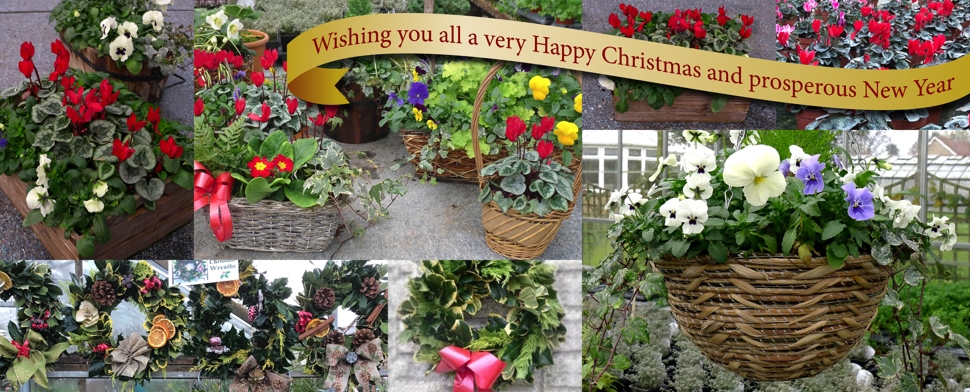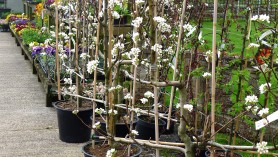We often refer to the various different tree shapes in our newsletters and blogs so we thought it might be helpful to jot down the details of each
The espalier shape sees the trunk growing right to the top of the plant and the branches coming off horizontally at regular intervals (known as ‘tiers’). This shape is used for apples and pears only as it doesn’t suit stoned fruit trees.
A Candelabra is a twin stem where each branch has been divided again resulting in 4 evenly spaced upright stems. These are ideal for growing against a wall or making a screen. Apples and pears are suitable for training in this way. See the image of the Candelabra-trained Granny Smith and Jonagold Applies with Williams Bon Credien Pears .
A fan shape has a very short trunk (about 60cms) and all the branches spread upwards and outwards from the top of it. Any fruit tree can be trained as a fan, but it is mainly used for figs and stone fruit.
A step-over is a low-growing, horizontally trained tree, around 45cm high, so you can step over it. Diminutive, yet very productive, it is perfect for lining a path or edging a bed.
Standards are trees with a clear stem before the first branches. A full standard usually has at least 1m clear stem, a half standard 50cm and so on.
Patio trees are small and suitable for growing in pots. Dwarf Patio indicates a tree with a dwarfing rootstock to make it suitable for pot growing




